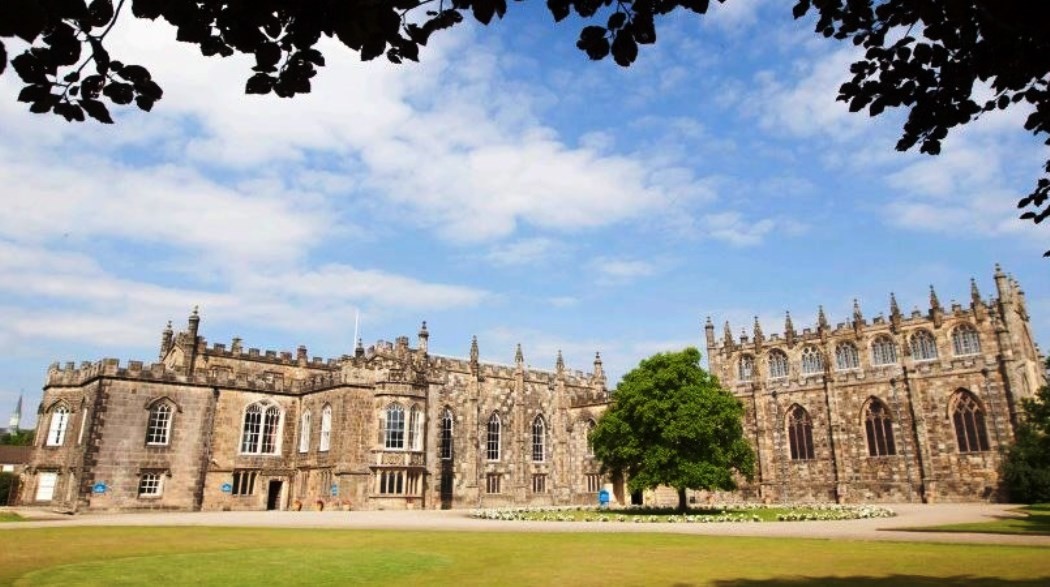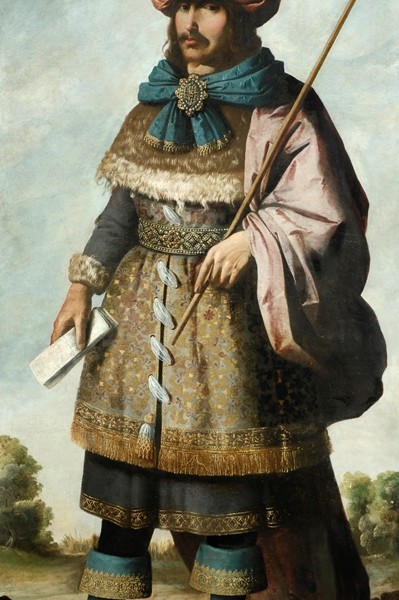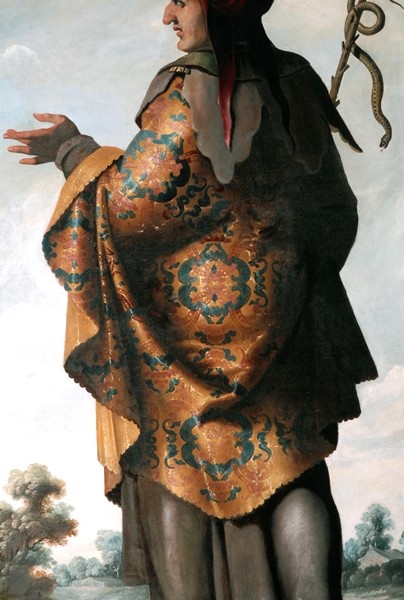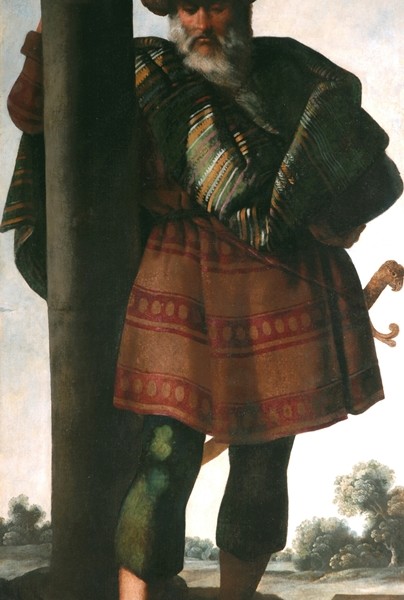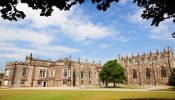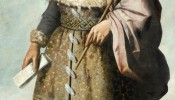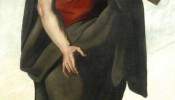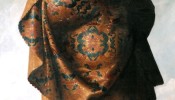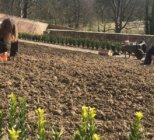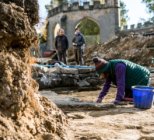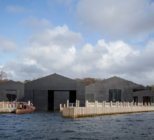The paintings have left the castle on only two occasions – to London in 1802 for work on their frames, and in 1995 when they went on display at the National Gallery in London and the Museo del Prado in Madrid. And once the 18-month redevelopment is completed in 2018 the paintings are likely to remain in the castle.
These important 17th-century Spanish paintings will be the subject of an in depth technical study at the Kimbell Art Museum, Fort Worth, Texas and following this they will then be shown for the first time outside of Europe at the Meadows Museum, Dallas and The Frick Collection, New York.
The study and subsequent US exhibitions of the Zurbarán paintings form part of a wider £70m development plan by the Auckland Castle Trust to transform one of Britain’s most important historical sites into a major new art and heritage destination for the UK.
Work will get underway on Auckland Castle’s redevelopment, which includes £10m HLF funding, gets underway in a matter of weeks and will see the regeneration of the State Rooms and the building of a new museum wing to house the Faith Galleries exploring the history of faith in the British Isles from pre-history to the modern day.
As part of the wider Auckland Castle projects, work will begin this autumn on the £10m revival of the seventeenth-century walled garden. Planning permission has also been granted for a new Welcome Building, and an Institute of Spanish Art and Culture is to open in Bishop Auckland Market Place inspired by the Zurbarán masterpieces which hang in the Castle’s Long Dining Room.
“This partnership marks one of the first steps in County Durham truly becoming the home of Spanish Art in the United Kingdom. International collaboration is fundamental to our ambitions as a new venue for the appreciation, research, and understanding, of the art and culture of the Hispanic world,” said Dr Chris Ferguson, Auckland Castle’s Curatorial Director. “We hope that these focused exhibitions of art from Auckland Castle will attract transatlantic visitors to explore North East England over the coming years.”
The paintings depictions of Jacob and his sons, created by the Spanish Golden Age master Francisco de Zurbarán in the 1640s, have hung at Auckland Castle since they were bought by Bishop Richard Trevor in 1756.
The series was saved for the benefit of the people of the North East, along with Auckland Castle, by Jonathan Ruffer in 2010 and has since inspired a major redevelopment of the historic palace.
Six of the paintings, portraying Joseph, Naphtali, Asher, Dan, Levi and Reuben, have already travelled to Texas, with full-scale reproductions hanging in Auckland Castle’s Long Dining Room until the site closes for the start of its restoration works next month.
The remaining paintings, representing Jacob, Simeon, Judah, Zebulun, Issachar, Gad and Arthur Pond’s copy of Benjamin, will then cross the Atlantic in October. They will initially undergo their first in-depth technical study, which includes infrared reflectography, ultra-violet light, x-radiography and pigment analysis will all be used to shed light on the physical properties of the works and offer a better understanding of Zurbarán’s artistic process.
This scientific analysis at the Kimbell Art Museum, Fort Worth will also allow the Auckland Castle Trust to plan and fundraise for the ongoing conservation and care of Jacob and his Twelve Sons after they return to the UK.
The results of the study, supervised by Claire Barry, Director of Conservation at the Kimbell Art Museum, will be published in partnership with the Centro de Estudios Europa Hispánica (CEEH) and Center for Spain in America (CSA).
“It is an exceptional opportunity to collaborate with Auckland Castle and the Meadows Museum on the first North American showing of Francisco de Zurbarán’s extraordinary series, Jacob and his Twelve Sons,” said Ian Wardropper, Director of The Frick Collection. “The technical analysis that the works will undergo at the Kimbell Art Museum will greatly enrich our understanding of the Sevillian master’s methods, while other catalogue essays commissioned for the show will explore the works in historical, cultural, and religious contexts.” Wardropper said he believed the sheer visual power and rich narrative content of this series would draw visitors in and the paintings would be displayed alongside works by Velázquez and Murillo—Zurbarán’s contemporaries—as well as by El Greco and Goya.
The series will return to Auckland Castle in May 2018, when the Castle reopens to the public following its refurbishment.
The paintings will be displayed at the Meadows Museum, Dallas, from 17 September, 2017 to 7 January, 2018, and The Frick Collection, New York, from 31 January to 22 April, 2018.
Facts about Jacob and his 12 Sons
The paintings of Jacob and his Twelve Sons were painted by the Spanish master Francisco de Zurbarán (1598-1664)between 1640 and 1644.
The iconography of the series is derived from the Book of Genesis, Chapter 49. On his deathbed, Jacob called together his twelve sons, who would become the founders of the Twelve Tribes of Israel, which, essentially, represents the start of the Jewish faith. He bestowed on each a “blessing,” which foretold their destinies and those of their tribes.
These prophesies provide the basis for the manner in which each figure is represented in Zurbaran’s series. The works are believed to have originally been destined for the New World, where in the 17th century it was commonly believed the indigenous inhabitants of the Americas were descended from the dispersal of the so-called ‘lost’ Tribes of Israel.
They have hung in a specially constructed gallery at Auckland Castle since 1756, when the Bishop of Durham, Richard Trevor, bought the series at auction from the collection of a Jewish merchant named Benjamin Mendez.
The paintings are a powerful and artistically unusual symbol of the Judeo-Christian story and their purchase, soon after parliament had repealed the Jewish Naturalisation Act of 1753, was a major political statement about the principle of religious freedom and the integration of Jewish people into British life, as well as the Jewish roots of Christian heritage.
Bishop Trevor was well known by some of the most powerful figures of European royalty, religion, politics and the military, and would regularly entertain them in the Long Dining Room at Auckland Castle where these powerfully symbolic paintings hung. The paintings’ presence at Auckland Castle was, and remains to this day, a profound plea for religious tolerance and social equality.


